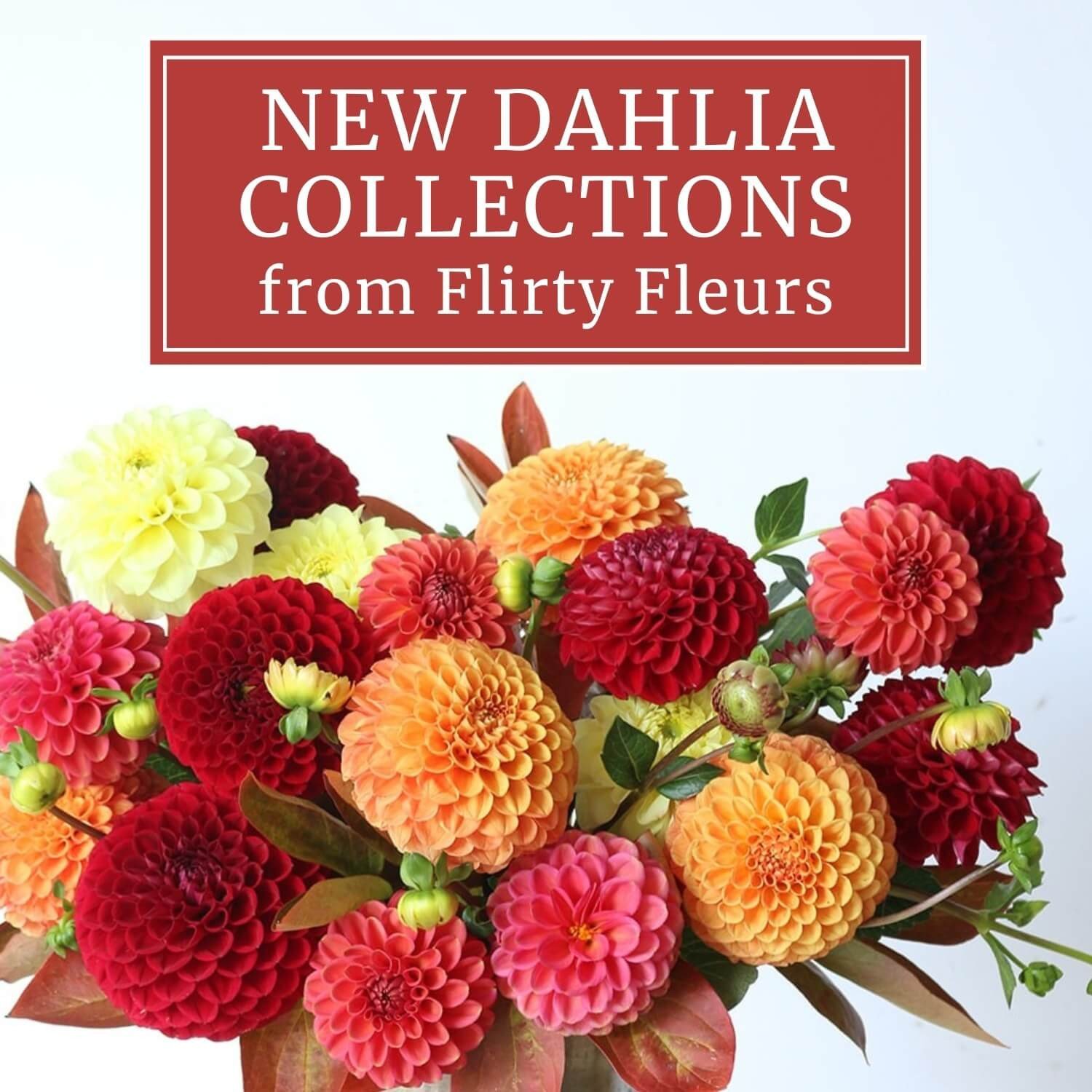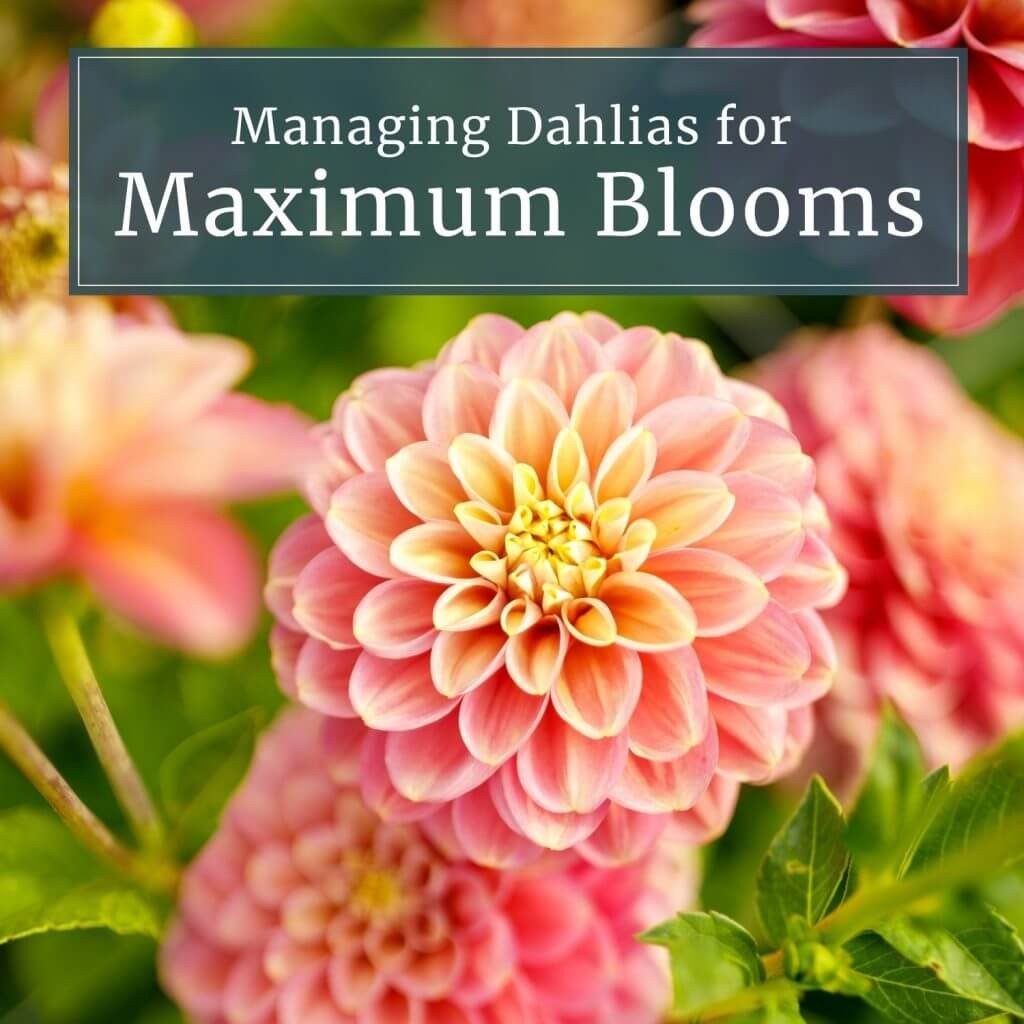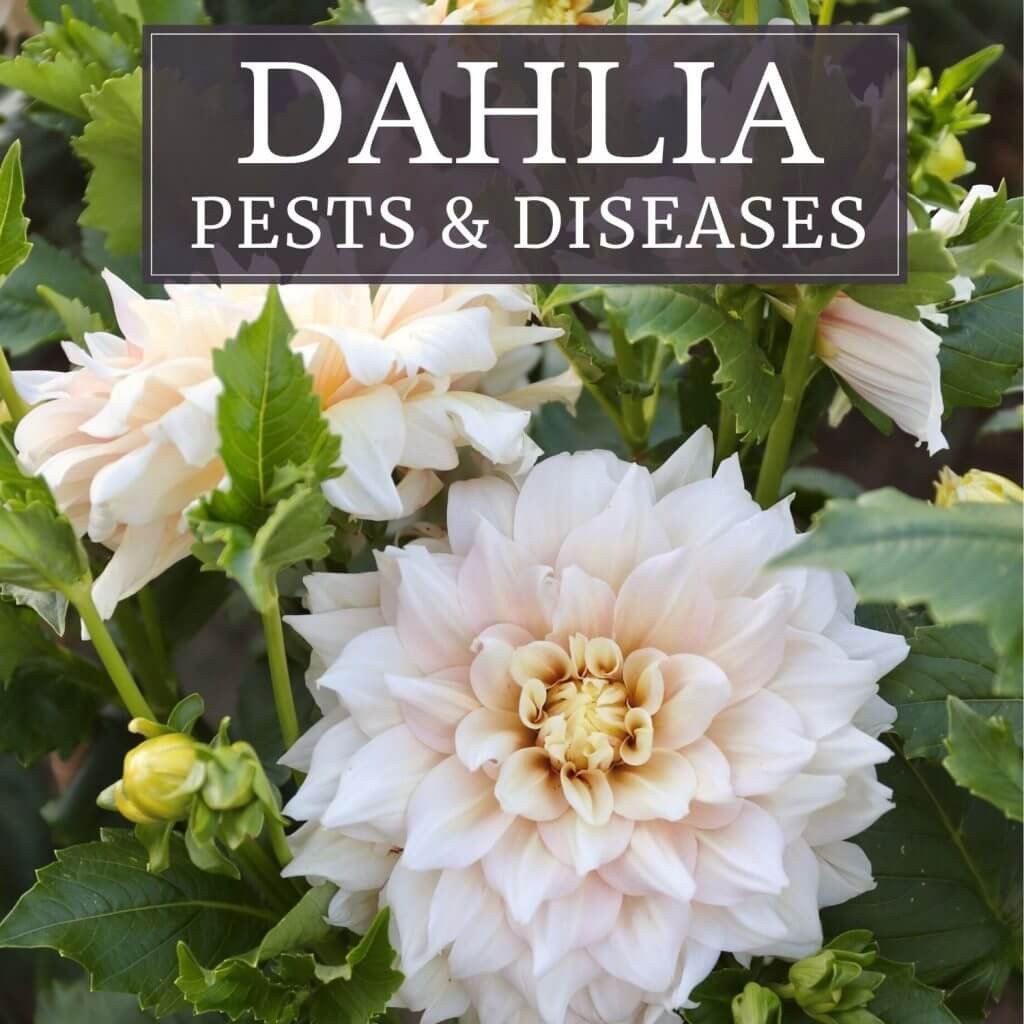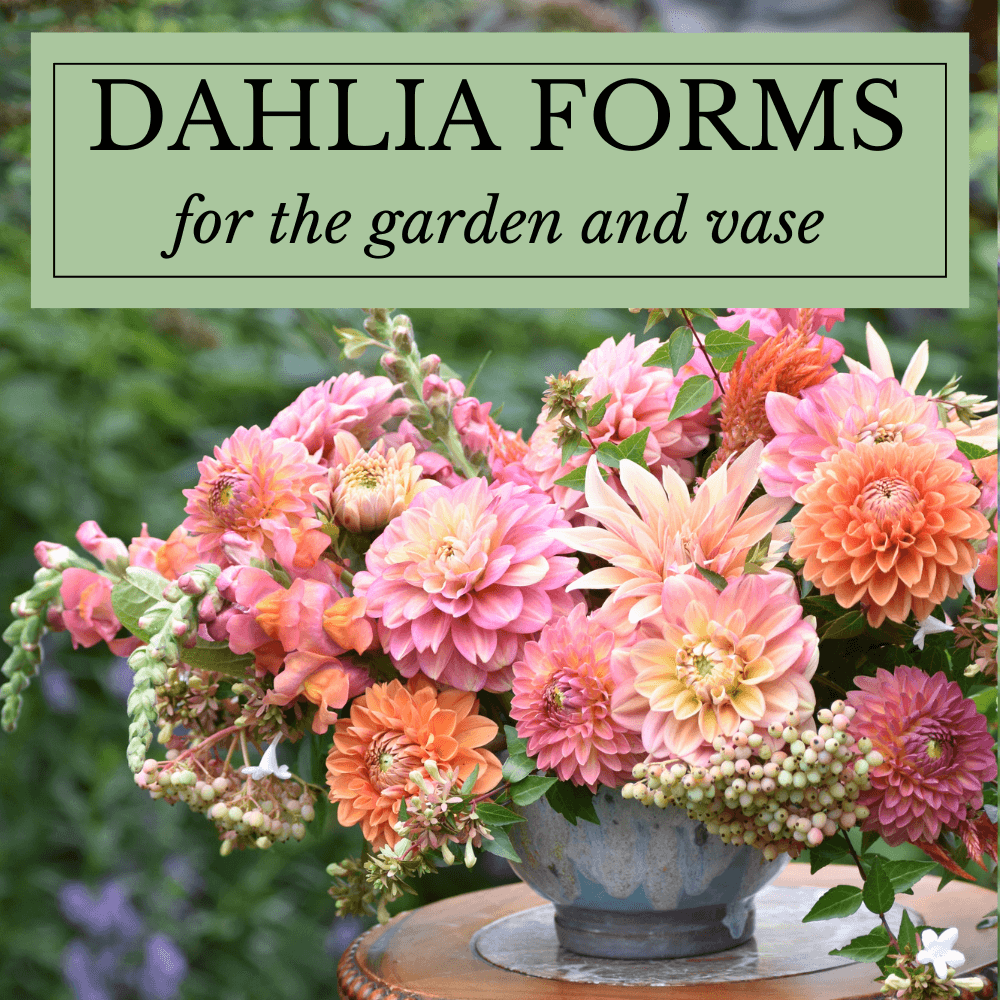
Expert Tips for Cutting, Conditioning and Arranging Dahlias
 It's high summer and the dahlias are coming on strong. The plants in my garden started pushing out blossoms a couple of weeks ago and will continue blooming right through early October. This year I am growing about 60 of these solar powered flower-producing machines. That’s a LOT of flowers to manage and a good reason to check in with a fellow dahlia addict for some timely advice.
It's high summer and the dahlias are coming on strong. The plants in my garden started pushing out blossoms a couple of weeks ago and will continue blooming right through early October. This year I am growing about 60 of these solar powered flower-producing machines. That’s a LOT of flowers to manage and a good reason to check in with a fellow dahlia addict for some timely advice. 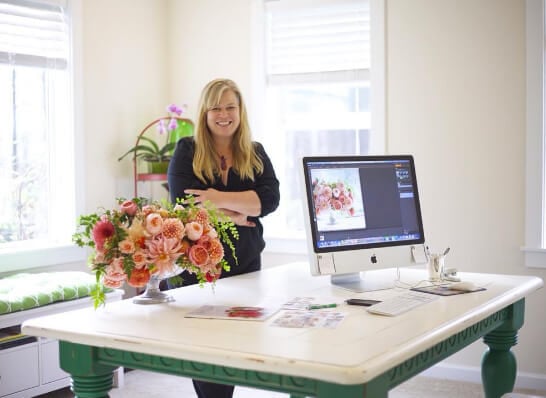
Floral Designer and Avid Gardener Alicia Schwede
I met Alicia almost 10 years ago when she began working with Longfield Gardens to design dahlia collections. She is a Seattle-area floral designer and nationally-respected leader in the local cut flower movement. In addition to running her floral design business, Bella Fiori, Alicia also writes a popular blog, gives workshops, coaches other florists, publishes a magazine and has a growing Instagram following. You can learn more on her website flirtyfleurs.com.
This busy entrepreneur is also an avid home flower gardener. While roses are her first love, dahlias are a close second. This year, Alicia is growing more than 300 of them in her backyard. In past years the count has sometimes topped 600! The combination of her professional experience as a florist and practical experience as a home gardener gives her a unique perspective and I think you'll find the following tips to be very useful. 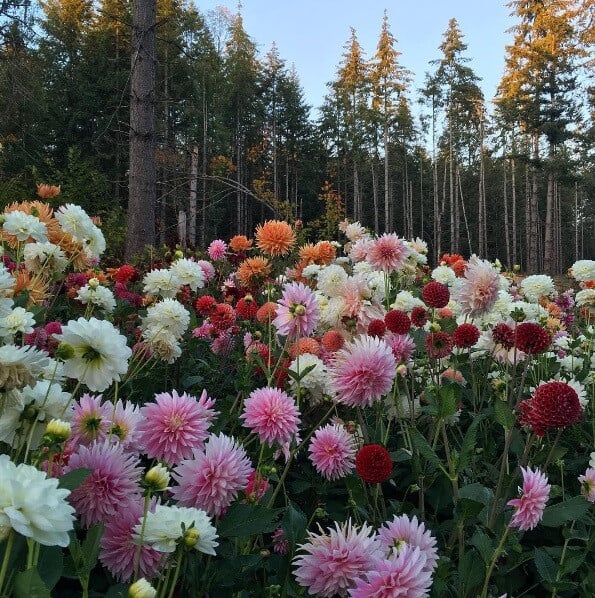 Alicia's dahlias in late summer.
Alicia's dahlias in late summer.
How to Pack in a Lot of Plants
Alicia spaces her dahlias much closer than I do. She plants individual tubers just 6” apart, and clumps are spaced 8 to 10” apart, depending on their size. There are two reasons she plants so closely: to avoid staking and to save space.
Alicia lives north of Seattle and her yard is surrounded by tall trees. The area where she grows dahlias is open and gets plenty of sun, and the trees keep out gusty winds. She has found that crowding the tubers within each row encourages the plants to support each other -- and lets her get by without staking. In windier locations this strategy may not be as successful. You can learn more about staking dahlias HERE. 
To Pinch or Not to Pinch
I have always pinched my dahlias when they're about a foot tall. Alicia doesn’t bother. She just lets the plants go and then manages their height by the way she harvests the flowers (more on that below). She does prune off all the leaves around the bottom of each plant, exposing about 6” of the stem. This encourages good air circulation and minimizes disease problems.
When you're growing dahlias, deadheading (cutting off spent flowers) is critical. Alicia makes deadheading an almost daily ritual. Rather than just snapping off the dead flower heads, she takes the time to remove both the flower and the stem -- just as she does when cutting for arrangements. 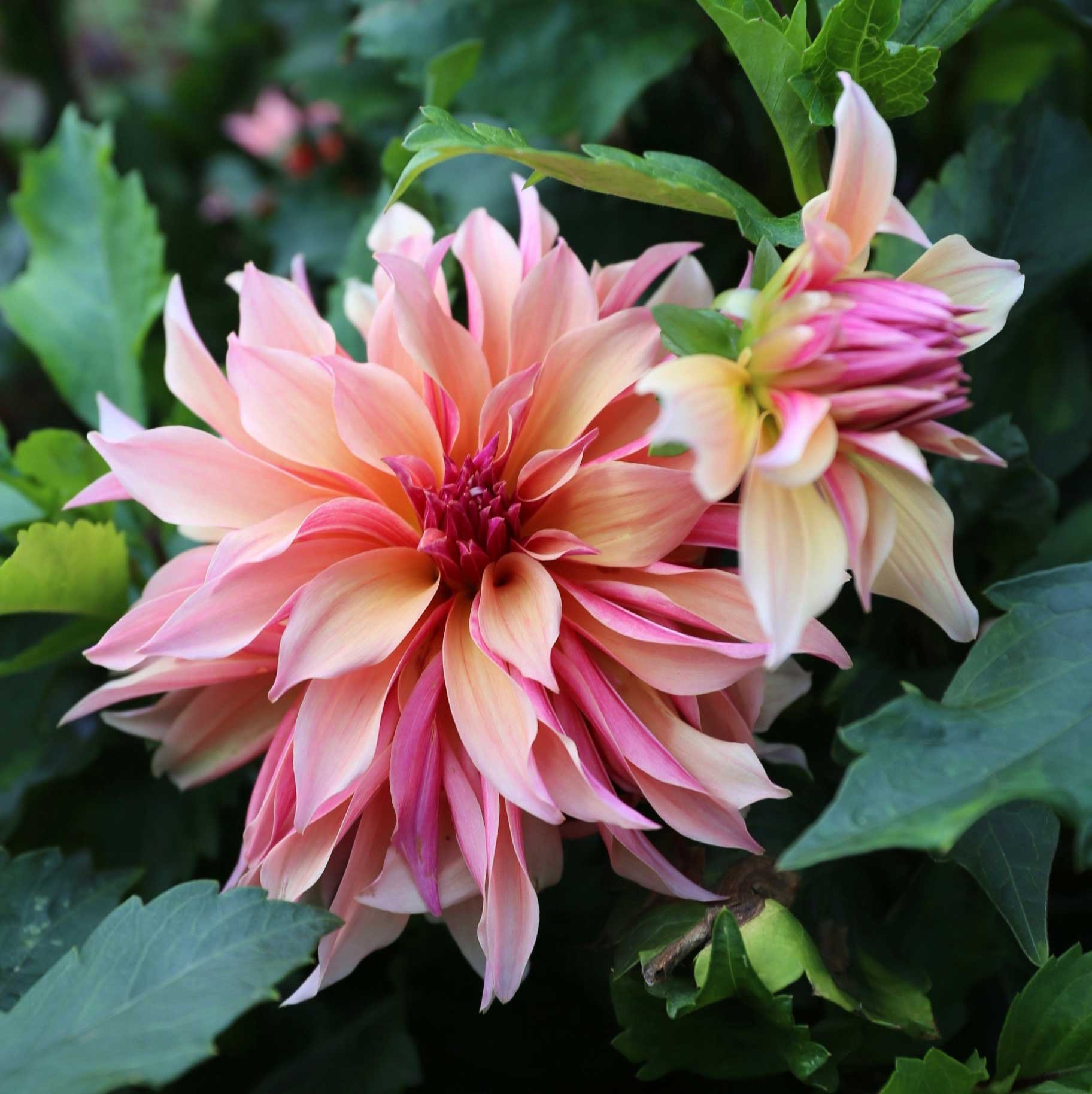
Tips for Harvesting Dahlias
Alicia recommends cutting dahlias in the early morning when the flowers are still dewy, or at the very end of the day when the bees have finished foraging. She says bees often nap in her dahlias – especially the dinnerplates – so she prefers to cut flowers before or after the bees are at work.
I also asked about the optimum stage for cutting dahlias. She says it all depends on the project. For production work (wholesale, workshops, weddings), she cuts her dahlias when the flowers about half-open. If she is using the flowers the same day, she cuts them fully open. To assess the flower's maturity, turn it over and check the petals on the back. If they are limp or soft, you have only about 24 hours before they start dropping. 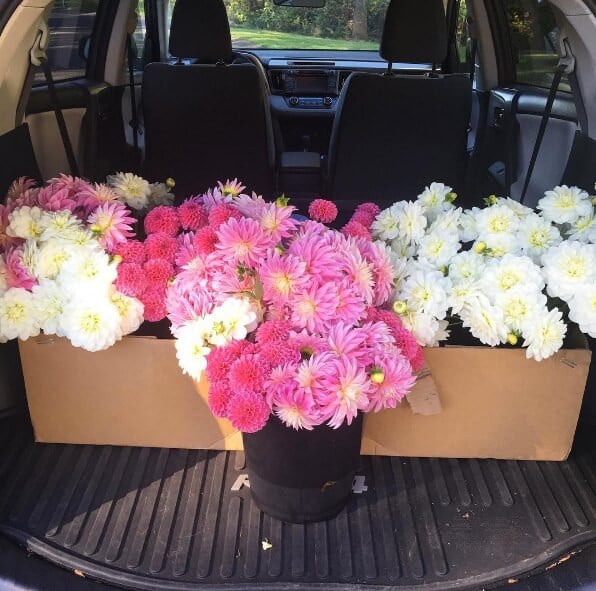
In the past, Alicia has sold some of her dahlias to the Seattle Wholesale Growers Market, which requires dahlias to have stems that are at least 12-15” long. I am always struggling to get dahlias with long stems, so I was eager to find out how she does it. Here's the secret.
When Alicia cuts a dahlia, she always cuts a long stem -- right back to one of the main uprights. This usually means sacrificing a good number of unopened buds. But if you can grit your teeth and cut a nice long stem, your plants will go on to produce more long stems. Of all Alicia's cutting garden tips, I found this one to be the most valuable -- and the hardest to do!
She also made another plug for frequent deadheading. If you are passing on a flower that looks a little too mature, don't leave it on the plant. Those spent flowers act like sponges, soaking up rain and welcoming disease. They also invite earwigs, which feed on decaying flower heads as well as flower buds.
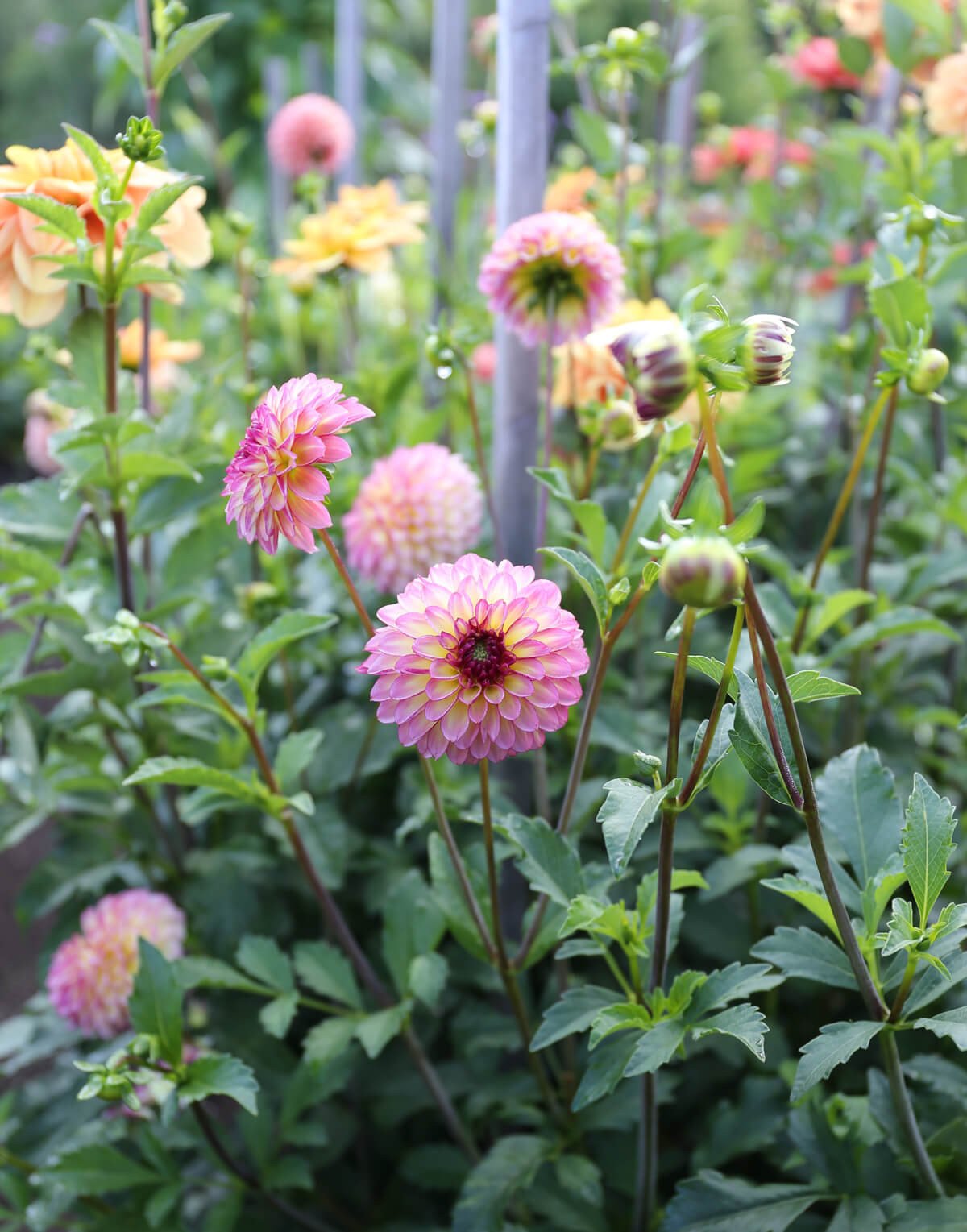
Tips for Conditioning Dahlias
Flower farmers always condition freshly cut flowers before sending them to market because it makes them last much longer. Alicia does the same thing whether she is cutting for the market, for clients, or for her own table. Conditioning starts the minute she cuts a stem.
Sharp scissors or pruning shears ensure a clean cut and make it easier for the cut stem to draw up water. (It also makes it easier for the plant to heal the cut.) Flower farmers usually harvest dahlias with a knife, but Alicia finds pruning shears work just as well.
A squeaky clean harvesting bucket is essential. Alicia fills 5 gallon buckets with 6-8” of clear, lukewarm water and takes them out to the garden with her. If you are harvesting a lot of flowers, bring out more than one bucket. Dahlia petals are easily damaged when the blossoms are crowded.
As each flower is cut, Alicia removes the lower leaves and then plops the stem right into the bucket. Flower farmers usually remove all the leaves and side buds because they take water away from the main blossom. But Alicia often keeps some of the side buds because she likes how they look in arrangements. 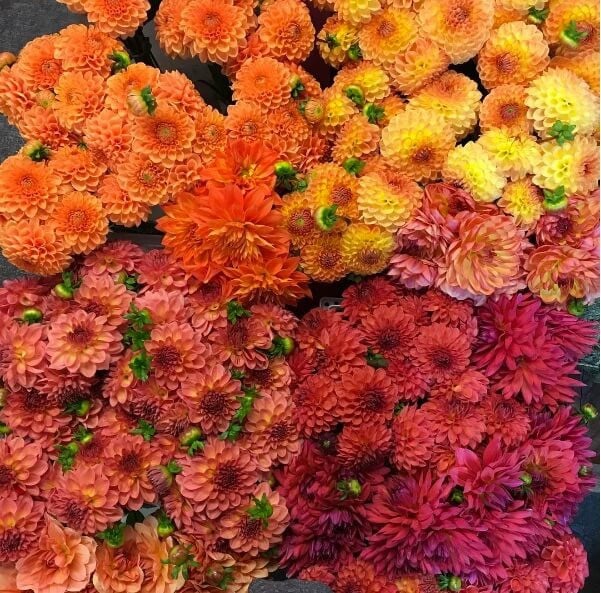
Alicia usually cuts her dahlias in the evening and then gives them an overnight rest in a cooler. If she’s cutting in the morning, she still makes sure they get at least an hour in the cooler. If you don’t have your own walk in cooler at home you can still give your dahlias a short rest in the coolest place you have available – the basement or even in an air-conditioned room.
Over the years, Alicia has become known for her long-lasting flowers. She attributes it to her obsession with keeping scissors, buckets and vases scrupulously clean. Harvest buckets get cleaned with bleach after every use to kill any bacteria that could clog the stems.
She does not use flower food in the conditioning buckets or in vases. Just clear water. She cautions that flower food must be diluted correctly. More is not better and can damage the flowers. When cutting lots of dahlias for a big event, Alicia sometimes treats them with Quick Dip, a commercial hydrating treatment that improves water uptake. Freshly cut stems are dipped in the solution for just a second or two and then put into water. 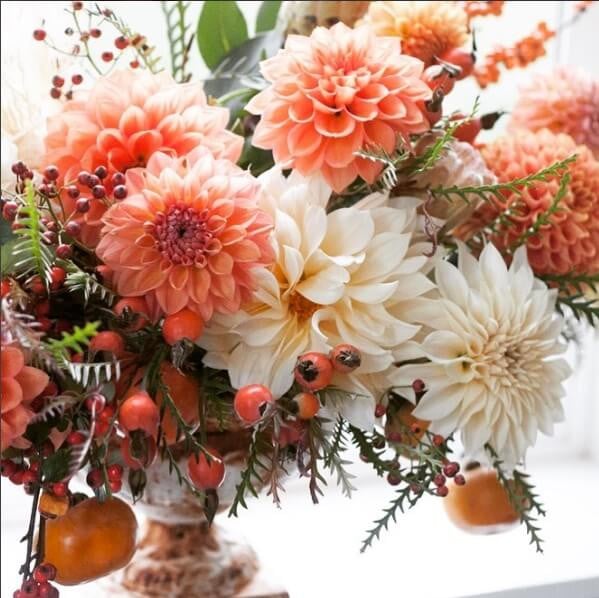
Tips for Arranging Dahlias
Dahlias are such impressive flowers that you can put a fistful in a vase and they look fabulous. Creating an arrangement that includes greenery and other flowers is a bit trickier. Alicia's dahlia arrangements are stunning, so I was eager to tap into her experience.
She said that while roses, tulips, sweet peas and many other popular cut flowers have pliable stems that are relatively easy to arrange in a vase, dahlia stems are stiff and the flowers need to be placed just so. Dahlia varieties with big, 8 or 9” flowers can also overwhelm mid-size arrangements and make neighboring flowers look insignificant. Yet another challenge is dahlia's late summer bloom time. In August and September it can be hard to find willing partners, as many annuals and perennials are already past their prime. 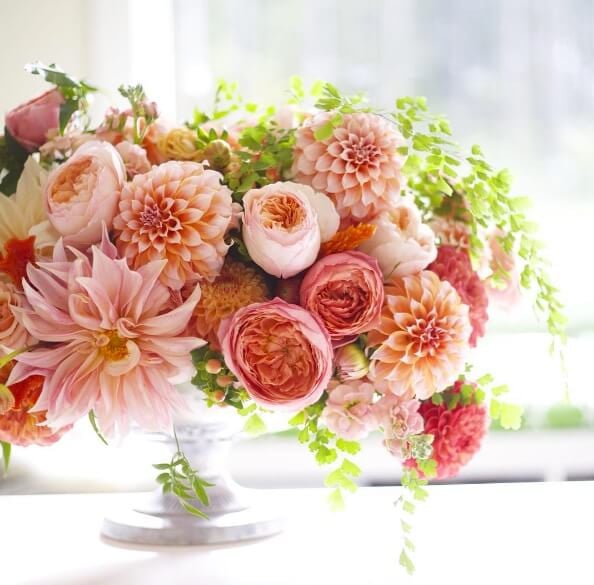
So when Alicia is arranging dahlias, greenery is very important. It helps to ground the large blossoms and set off their lovely shapes and colors. She often incorporates cuttings from shrubs as well as vines, blackberry canes, scented geraniums, ferns and herbs such as sage and mint.
For companion flowers, roses are her go-to favorite. With their rich colors and soft textures, roses blend well, yet can also hold their own with the dahlias. Many roses re-bloom in late summer, so the timing also works well.
Other good companions include monarda, zinnias, nasturtiums and clematis. The very best companion for a dahlia is often another dahlia. So Alicia grows a wide range of flower types, including pompon, ball, single, cactus, anemone and waterlily. 
Before your flowers go into a vase, give the stems a fresh cut. Alicia told me she hasn't noticed any difference between angled and straight cuts. Do make sure that no leaves are in or touching the water. If possible, change the vase water every day or two. Remove the stems, run them under cold water to wash off any slime, and recut the ends. Rinse out the vase, fill it with fresh water and replace the stems.
To learn more about dahlias, you may be interested in reading: How to Pinch and Stake Dahlias, 8 Tips for Growing Better Dahlias, Tips for Growing Dahlias in Hot Weather, and Types of Dahlias: 8 Great Looks You will find our exclusive Flirty Fleurs Dahlia Collections click HERE. Learn more about Alicia and FlirtyFleurs HERE.

